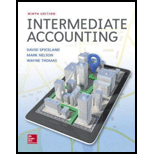
Intermediate Accounting
9th Edition
ISBN: 9781259722660
Author: J. David Spiceland, Mark W. Nelson, Wayne M Thomas
Publisher: McGraw-Hill Education
expand_more
expand_more
format_list_bulleted
Concept explainers
Textbook Question
thumb_up100%
Chapter 2, Problem 2.1Q
Explain the difference between external events and internal events. Give an example of each type of event.
Expert Solution & Answer
To determine
AccountingCycle:
Accounting cycle refers to the process of recording a business transaction in the books of accounts. This cycle concludes when the financial statements are prepared.
To Explain: The difference between external events, and internal events, and to give examples for them.
Explanation of Solution
- External events are the events which involves an exchange transaction between the two parties, which is between a company, and another entity. Whereas, internal events are the events which does not involve any exchange transaction but such events affect the financial position of the company.
- Examples of external events are as follows:
-
- a) Borrowing of cash from bank
- b) Purchase of inventory
- c) Sale to a customer
- Examples of internal events are as follows:
-
- a) Accrual of salary expense
- b) Depreciation expense
- c) Expiry of prepaid rent
Want to see more full solutions like this?
Subscribe now to access step-by-step solutions to millions of textbook problems written by subject matter experts!
Students have asked these similar questions
I need assistance with this general accounting question using appropriate principles.
Can you solve this general accounting problem using appropriate accounting principles?
I need help solving this general accounting question with the proper methodology.
Chapter 2 Solutions
Intermediate Accounting
Ch. 2 - Explain the difference between external events and...Ch. 2 - Each economic event or transaction will have a...Ch. 2 - What is the purpose of a journal? What is the...Ch. 2 - Explain the difference between permanent accounts...Ch. 2 - Describe how debits and credits affect assets,...Ch. 2 - Describe how debits and credits affect temporary...Ch. 2 - What is the first step in the accounting...Ch. 2 - Prob. 2.8QCh. 2 - Prob. 2.9QCh. 2 - Prob. 2.10Q
Ch. 2 - What is an unadjusted trial balance? An adjusted...Ch. 2 - Define adjusting entries and discuss their...Ch. 2 - Define closing entries and their purpose.Ch. 2 - Define prepaid expenses and provide at least two...Ch. 2 - Deferred revenues represent liabilities recorded...Ch. 2 - Define accrued liabilities. What adjusting journal...Ch. 2 - Prob. 2.17QCh. 2 - [Based on Appendix A] What is the purpose of a...Ch. 2 - [Based on Appendix B] Define reversing entries and...Ch. 2 - [Based on Appendix C] What is the purpose of...Ch. 2 - Prob. 2.21QCh. 2 - Transaction analysis LO21 The Marchetti Soup...Ch. 2 - Journal entries LO22 Prepare journal entries for...Ch. 2 - Prob. 2.3BECh. 2 - Journal entries LO22 Prepare journal entries for...Ch. 2 - Adjusting entries LO25 Prepare the necessary...Ch. 2 - Adjusting entries; income determination LO24,...Ch. 2 - Adjusting entries LO25 Prepare the necessary...Ch. 2 - Income determination LO24 If none of the...Ch. 2 - Adjusting entries LO25 Prepare the necessary...Ch. 2 - Financial statements LO26 The following account...Ch. 2 - Financial statements LO26 The following account...Ch. 2 - Closing entries LO27 The year-end adjusted trial...Ch. 2 - Prob. 2.13BECh. 2 - Transaction analysis LO21 The following...Ch. 2 - Journal entries LO22 Prepare journal entries to...Ch. 2 - T-accounts and trial balance LO23 Post the...Ch. 2 - Journal entries LO22 The following transactions...Ch. 2 - Prob. 2.5ECh. 2 - Debits and credits LO22 Indicate whether a debit...Ch. 2 - Transaction analysis; debits and credits LO22...Ch. 2 - Adjusting entries LO25 Prepare the necessary...Ch. 2 - Adjusting entries LO25 Prepare the necessary...Ch. 2 - Adjusting entries; solving for unknowns LO24,...Ch. 2 - Adjusting entries LO25 The Mazzanti Wholesale...Ch. 2 - Financial statements and closing entries LO26,...Ch. 2 - Closing entries LO27 American Chip Corporations...Ch. 2 - Prob. 2.14ECh. 2 - Cash versus accrual accounting; adjusting entries ...Ch. 2 - External transactions and adjusting entries LO22,...Ch. 2 - Accrual accounting income determination LO24,...Ch. 2 - Cash versus accrual accounting LO28 Stanley and...Ch. 2 - Prob. 2.19ECh. 2 - Worksheet Appendix 2A The December 31, 2018,...Ch. 2 - Reversing entries Appendix 2B The employees of...Ch. 2 - Reversing entries Appendix 2B Refer to E 29 and...Ch. 2 - Reversing entries Appendix 2B Refer to E 29 and...Ch. 2 - Special journals Appendix 2C The White Companys...Ch. 2 - Prob. 2.25ECh. 2 - Accounting cycle through unadjusted trial balance ...Ch. 2 - Accounting cycle through unadjusted trial balance ...Ch. 2 - Adjusting entries LO25 Pastina Company sells...Ch. 2 - Accounting cycle; adjusting entries through...Ch. 2 - Adjusting entries LO25 Howarth Companys fiscal...Ch. 2 - Accounting cycle LO22 through LO27 The general...Ch. 2 - Adjusting entries and income effects LO22, LO25...Ch. 2 - Adjusting entries LO25 Excalibur Corporation...Ch. 2 - Accounting cycle; unadjusted trial balance through...Ch. 2 - Prob. 2.10PCh. 2 - Prob. 2.11PCh. 2 - Cash versus accrual accounting LO28 Zambrano...Ch. 2 - Worksheet Appendix 2A Using the information from...Ch. 2 - Judgment Case 21 Cash versus accrual accounting;...Ch. 2 - Prob. 2.2BYPCh. 2 - Communication Case 23 Adjusting entries LO24 I...Ch. 2 - Continuing Cases Target Case LO24, LO28 Target...
Knowledge Booster
Learn more about
Need a deep-dive on the concept behind this application? Look no further. Learn more about this topic, accounting and related others by exploring similar questions and additional content below.Similar questions
- Henderson Corporation uses the calendar year as its tax year. It acquires and places into service two depreciable assets during 2024: • Asset #1: 7-year property; $940,000 cost; placed into service on January 20. Asset #2: 5-year property; $410,000 cost; placed into service on August 1. View the MACRS half-year convention rates. Read the requirements. Calculate Henderson's depreciation deductions for 2024. (Use MACRS rates to two decimal places, X.XX%. Round the MACRS depreciation to the nearest dollar.) 2024 Depreciation Asset #1 Asset #2 Total depreciation 134,326 82,000 216,326 Calculate Henderson's depreciation deductions for 2025. (Use MACRS rates to two decimal places, X.XX%. Round the MACRS depreciation to the nearest dollar.) 2025 Depreciation Asset #1 Asset #2 Total depreciation 230,206 131,200 361,406 b. What are Henderson's depreciation deductions for 2024 and 2025 if this is the only property it places into service in those years and Henderson elects Sec. 179 expensing for…arrow_forwardPlease explain the solution to this general accounting problem with accurate principles.arrow_forwardHenderson Corporation uses the calendar year as its tax year. It acquires and places into service two depreciable assets during 2024: • Asset #1: 7-year property; $940,000 cost; placed into service on January 20. Asset #2: 5-year property; $410,000 cost; placed into service on August 1. View the MACRS half-year convention rates. Read the requirements. Calculate Henderson's depreciation deductions for 2024. (Use MACRS rates to two decimal places, X.XX%. Round the MACRS depreciation to the nearest dollar.) 2024 Depreciation Asset #1 Asset #2 Total depreciation 134,326 82,000 216,326 Calculate Henderson's depreciation deductions for 2025. (Use MACRS rates to two decimal places, X.XX%. Round the MACRS depreciation to the nearest dollar.) 2025 Depreciation Asset #1 Asset #2 Total depreciation 230,206 131,200 361,406 b. What are Henderson's depreciation deductions for 2024 and 2025 if this is the only property it places into service in those years and Henderson elects Sec. 179 expensing for…arrow_forward
- Carlyon Company listed the following items in its December 31, Year 1, financial statements: Investment in Man Company bonds $21,000 Dividends payable: preferred 4,000 Dividends payable: common 50,000 Preferred stock, 8%, $100 par 100,000 Common stock, $10 par 500,000 Additional paid-in capital on preferred stock 20,000 Additional paid-in capital on common stock 262,500 Retained earnings 270,000 During Year 2, the following transactions occurred: Feb. 2 Paid the semiannual dividends declared on December 15, Year 1. Mar. 5 Declared a property dividend, payable to common shareholders on April 5 in Man Company bonds being held to maturity. The bonds (which have a book value of $21,000) have a current market value of $30,000. Apr. 5 Paid the property dividend. Jul. 6 Declared a $4 per share semiannual cash dividend on preferred stock and a $1.10 per share semiannual dividend on common stock, to be paid on August 17. Aug. 17 Paid the cash dividends.…arrow_forwardRequired information [The following information applies to the questions displayed below.] Jarvie loves to bike. In fact, he has always turned down better-paying jobs to work in bicycle shops where he gets an employee discount. At Jarvie's current shop, Bad Dog Cycles, each employee is allowed to purchase four bicycles a year at a discount. Bad Dog has an average gross profit percentage on bicycles of 25 percent. During the current year, Jarvie bought the following bikes: Description Retail Price Specialized road bike $ 4,000 Cost $ 3,600 Employee Price $ 2,800 Rocky Mountain mountain bike 5,000 4,100 4,000 Trek road bike 3,900 3,300 2,730 Yeti mountain bike 4,600 3,400 3,680 b. What amount of deductions is Bad Dog allowed to claim from these transactions? Amount of deductionsarrow_forwardJarvie loves to bike. In fact, he has always turned down better-paying jobs to work in bicycle shops where he gets an employee discount. At Jarvie's current shop, Bad Dog Cycles, each employee is allowed to purchase four bicycles a year at a discount. Bad Dog has an average gross profit percentage on bicycles of 25 percent. During the current year, Jarvie bought the following bikes: Description Retail Price Specialized road bike $ 4,000 Cost $ 3,600 Employee Price $ 2,800 Rocky Mountain mountain bike 5,000 4,100 4,000 Trek road bike 3,900 3,300 2,730 Yeti mountain bike 4,600 3,400 3,680 a. What amount is Jarvie required to include in taxable income from these purchases? Amount to be includedarrow_forward
- Yost received 300 NQOs (each option gives Yost the right to purchase 10 shares of Cutter Corporation stock for $19 per share). At the time he started working for Cutter Corporation three years ago, Cutter's stock price was $19 per share. Yost exercised all of his options when the share price was $38 per share. Two years after acquiring the shares, he sold them at $59 per share. Note: Input all amounts as positive values. Leave no answer blank. Enter zero if applicable. d. Assume that Yost's options were exercisable at $24 and expired after five years. If the stock only reached $22 during its high point during the five-year period, what are Yost's tax consequences on the grant date, the exercise date, and the date the shares are sold, assuming his ordinary marginal rate is 35 percent and his long-term capital gains rate is 15 percent? Grant date Exercise date Taxes Due Sale datearrow_forwardMark received 10 ISOs (each option gives him the right to purchase 14 shares of Hendricks Corporation stock for $6 per share) at the time he started working for Hendricks Corporation five years ago, when Hendricks's stock price was $5 per share. Now that Hendricks's share price is $35 per share, Mark intends to exercise all of his options and hold all of his shares for more than one year. Assume that more than a year after exercise, Mark sells the stock for $35 a share. Note: Enter all amounts as positive values. Leave no answers blank. Enter zero if applicable. b. What are Hendricks's tax consequences on the grant date, the exercise date, and the date Mark sells the shares? Grant date Exercise date Sale date Tax Benefitarrow_forwardYost received 300 NQOs (each option gives Yost the right to purchase 10 shares of Cutter Corporation stock for $19 per share). At the time he started working for Cutter Corporation three years ago, Cutter's stock price was $19 per share. Yost exercised all of his options when the share price was $38 per share. Two years after acquiring the shares, he sold them at $59 per share. Note: Input all amounts as positive values. Leave no answer blank. Enter zero if applicable. c. Assume that Yost is "cash poor" and needs to engage in a same-day sale in order to buy his shares. Due to his belief that the stock price is going to increase significantly, he wants to maintain as many shares as possible. How many shares must he sell in order to cover his purchase price and taxes payable on the exercise? Number of shares to be soldarrow_forward
- Mark received 10 ISOs (each option gives him the right to purchase 14 shares of Hendricks Corporation stock for $6 per share) at the time he started working for Hendricks Corporation five years ago, when Hendricks's stock price was $5 per share. Now that Hendricks's share price is $35 per share, Mark intends to exercise all of his options and hold all of his shares for more than one year. Assume that more than a year after exercise, Mark sells the stock for $35 a share. Note: Enter all amounts as positive values. Leave no answers blank. Enter zero if applicable. a. What are Mark's taxes due on the grant date, the exercise date, and the date he sells the shares, assuming his ordinary marginal rate is 32 percent and his long-term capital gains rate is 15 percent? Grant date Exercise date Sale date Taxes Duearrow_forwardOn January 1, year 1, Dave received 2,500 shares of restricted stock from his employer, RRK Corporation. On that date, the stock price was $13 per share. On receiving the restricted stock, Dave made the 83(b) election. Dave's restricted shares will vest at the end of year 2. He intends to hold the shares until the end of year 4, when he intends to sell them to help fund the purchase of a new home. Dave predicts the share price of RRK will be $33 per share when his shares vest and $54 per share when he sells them. Assume that Dave's price predictions are correct, and answer the following questions: Note: Leave no answers blank. Enter zero if applicable. Round your final answer to the nearest whole dollar value. Enter all amounts as positive values. b. What are the tax consequences of these transactions to RRK? Grant date Tax consequences Vesting date $ 0 Sale date $ 0arrow_forwardMeg works for Freedom Airlines in the accounts payable department. Meg and all other employees receive free flight benefits (for the employee, family, and 10 free buddy passes for friends per year) as part of its employee benefits package. If Meg uses 15 flights with a value of $6,975 this year, how much must she include in her compensation this year? Amount includedarrow_forward
arrow_back_ios
SEE MORE QUESTIONS
arrow_forward_ios
Recommended textbooks for you
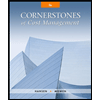 Cornerstones of Cost Management (Cornerstones Ser...AccountingISBN:9781305970663Author:Don R. Hansen, Maryanne M. MowenPublisher:Cengage Learning
Cornerstones of Cost Management (Cornerstones Ser...AccountingISBN:9781305970663Author:Don R. Hansen, Maryanne M. MowenPublisher:Cengage Learning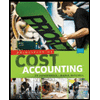 Principles of Cost AccountingAccountingISBN:9781305087408Author:Edward J. Vanderbeck, Maria R. MitchellPublisher:Cengage Learning
Principles of Cost AccountingAccountingISBN:9781305087408Author:Edward J. Vanderbeck, Maria R. MitchellPublisher:Cengage Learning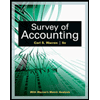 Survey of Accounting (Accounting I)AccountingISBN:9781305961883Author:Carl WarrenPublisher:Cengage Learning
Survey of Accounting (Accounting I)AccountingISBN:9781305961883Author:Carl WarrenPublisher:Cengage Learning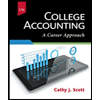 College Accounting (Book Only): A Career ApproachAccountingISBN:9781337280570Author:Scott, Cathy J.Publisher:South-Western College Pub
College Accounting (Book Only): A Career ApproachAccountingISBN:9781337280570Author:Scott, Cathy J.Publisher:South-Western College Pub Intermediate Accounting: Reporting And AnalysisAccountingISBN:9781337788281Author:James M. Wahlen, Jefferson P. Jones, Donald PagachPublisher:Cengage Learning
Intermediate Accounting: Reporting And AnalysisAccountingISBN:9781337788281Author:James M. Wahlen, Jefferson P. Jones, Donald PagachPublisher:Cengage Learning

Cornerstones of Cost Management (Cornerstones Ser...
Accounting
ISBN:9781305970663
Author:Don R. Hansen, Maryanne M. Mowen
Publisher:Cengage Learning

Principles of Cost Accounting
Accounting
ISBN:9781305087408
Author:Edward J. Vanderbeck, Maria R. Mitchell
Publisher:Cengage Learning

Survey of Accounting (Accounting I)
Accounting
ISBN:9781305961883
Author:Carl Warren
Publisher:Cengage Learning

College Accounting (Book Only): A Career Approach
Accounting
ISBN:9781337280570
Author:Scott, Cathy J.
Publisher:South-Western College Pub

Intermediate Accounting: Reporting And Analysis
Accounting
ISBN:9781337788281
Author:James M. Wahlen, Jefferson P. Jones, Donald Pagach
Publisher:Cengage Learning

Capital Budgeting Introduction & Calculations Step-by-Step -PV, FV, NPV, IRR, Payback, Simple R of R; Author: Accounting Step by Step;https://www.youtube.com/watch?v=hyBw-NnAkHY;License: Standard Youtube License